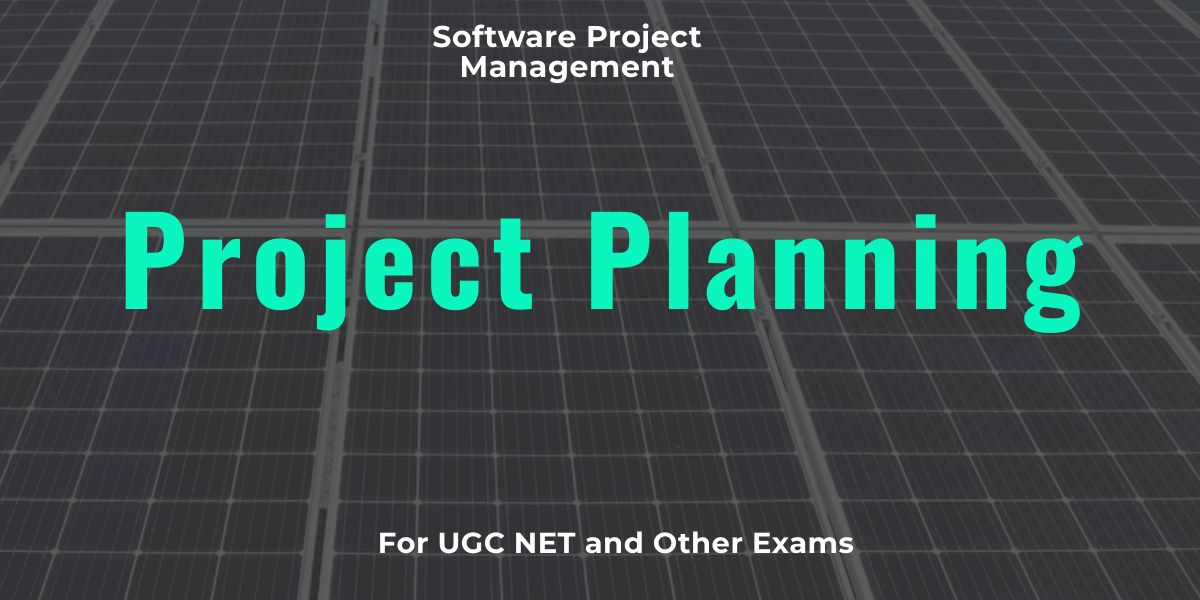
Project Planning
What is Project Planning?
Project planning is the process of defining objectives, scope, tasks, resources, timelines, and risks to ensure a project’s successful execution. It provides a structured roadmap for the project team to follow and aligns stakeholders on expectations.
Why is Project Planning Important?
✔ Ensures Clear Objectives → Everyone understands project goals.
✔ Improves Resource Allocation → Avoids resource wastage and overload.
✔ Minimizes Risks → Identifies and mitigates potential issues.
✔ Enhances Time Management → Prevents delays and keeps the project on track.
✔ Controls Budget → Helps avoid cost overruns.
Key Components of Project Planning
Project planning consists of several key elements that ensure a project’s success.
1. Project Objectives
- Defines what the project aims to achieve.
- Should be SMART (Specific, Measurable, Achievable, Relevant, Time-bound).
- Example: “Develop an e-commerce website to increase online sales by 30% within 6 months.”
2. Project Scope
- Defines what is included and what is excluded in the project.
- Prevents scope creep (uncontrolled expansion of project scope).
- Example:
- ✅ In Scope: Website development, payment gateway integration.
- ❌ Out of Scope: Mobile app development, AI-based recommendations.
3. Work Breakdown Structure (WBS)
- Breaks the project into smaller, manageable tasks.
- Tasks are organized hierarchically for better execution.
- Example (for website development):
- 📌 Frontend Development → UI Design, Homepage, Product Page.
- 📌 Backend Development → Database Setup, API Development.
4. Timeline & Scheduling
- Defines project start and end dates.
- Uses Gantt charts, milestones, and deadlines to track progress.
- Example:
- 🗓️ Week 1-2 → Requirement Gathering
- 🗓️ Week 3-4 → UI/UX Design
- 🗓️ Week 5-10 → Development
- 🗓️ Week 11-12 → Testing and Deployment
5. Resource Allocation
- Identifies team members, equipment, budget, and materials required.
- Ensures optimal workload distribution among team members.
- Example:
- 👨💻 Developers: 3 Full-Stack Engineers.
- 🎨 Designers: 1 UI/UX Expert.
- 💰 Budget: $50,000.
6. Budget Planning
- Estimates the total cost of the project.
- Includes fixed and variable costs like salaries, tools, and software.
- Example:
- 💰 Software & Licenses: $5,000
- 💰 Salaries: $30,000
- 💰 Marketing & Hosting: $15,000
7. Risk Management
- Identifies potential risks and how to mitigate them.
- Uses a Risk Register to document issues.
- Example:
- ⚠️ Risk: Server downtime.
- 🔧 Solution: Use a cloud-based backup system.
- ⚠️ Risk: Budget Overrun.
- 🔧 Solution: Maintain contingency funds (10% extra).
8. Communication Plan
- Defines who communicates what, when, and how.
- Ensures effective coordination among stakeholders.
- Example:
- 📢 Daily Standups → Development Team (15 mins).
- 🏗️ Weekly Progress Report → Project Manager → Stakeholders.
9. Quality Assurance (QA) Plan
- Ensures deliverables meet quality standards before release.
- Includes code reviews, testing phases, and bug tracking.
- Example:
- ✅ Unit Testing: Ensures individual components work correctly.
- ✅ Integration Testing: Tests interactions between modules.
- ✅ User Acceptance Testing (UAT): Client validates final product.
10. Change Management Plan
- Defines how changes to scope, budget, or timelines will be handled.
- Example:
- 📌 Change Request → Review → Approval → Implementation.
- 📝 All changes must be approved by the Project Manager and Client.
Project Planning Tools & Techniques
✔ Gantt Chart → Visual timeline for tasks (MS Project, Trello).
✔ PERT Chart → Maps dependencies between tasks.
✔ Risk Register → Lists potential risks and mitigation plans.
✔ Agile Methodology → Uses sprints for iterative progress (JIRA, Scrum).
Example: Project Plan for an E-Commerce Website
📌 Objective: Develop an e-commerce website for selling fashion products.
📌 Scope: Website design, payment integration, product management.
📌 Timeline: 6 months.
📌 Resources: 4 developers, 1 UI/UX designer, $50,000 budget.
📌 Milestones:
- ✅ Month 1: Planning & Wireframing.
- ✅ Month 2-3: Development.
- ✅ Month 4: Testing.
- ✅ Month 5-6: Deployment & Marketing.
Challenges in Project Planning
❌ Unclear Requirements → Leads to confusion and rework.
❌ Scope Creep → Project expands beyond original scope.
❌ Budget Overruns → Poor cost estimation leads to financial issues.
❌ Poor Communication → Misalignment between teams and stakeholders.
✔ Solution: Use a clear plan, regular updates, stakeholder approvals, and risk mitigation strategies.
Conclusion
Project planning is the foundation of successful project execution. A well-structured plan ensures that the project stays on schedule, within budget, and meets stakeholder expectations. By following these best practices, project managers can reduce risks, improve efficiency, and achieve project success.




